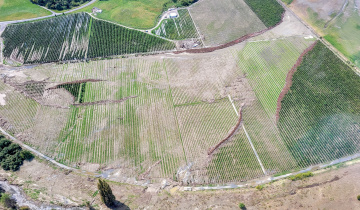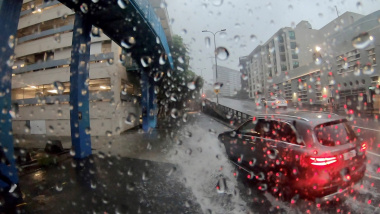Risks from natural hazards are part of every day life for New Zealanders, whether it is from floods, storms, tsunami, landslides, severe weather or earthquakes. Awareness and understanding of risk and effective risk management is therefore necessary to reduce the vulnerability of our communities.
Concept of risk
In the context of natural hazards, "risk" not only represents the possibility that a hazard event could occur, but also its likelihood and consequences. There are many ways it can impact a community, from the destruction of property and infrastructure, through to injuries and casualties, to influencing economic activity.
Risk management is a way of preparing a community by employing measures to minimise impacts, and preparing them to cope with impacts. This includes planning to minimise impacts, well prepared emergency plans and measures to protect the most vulnerable people of the community.
Risk management
Risk mitigation (i.e. moderating the severity of a hazard impact) is the main objective of risk management. It aims to reduce the physical and economic impacts of an event and limit the human, material, economic and environmental costs of an emergency or disaster. Therefore, it is necessary to have good information on the costs of natural disasters. These are estimated with a risk analysis.
Following the risk analysis, the risks are evaluated in a risk assessment process to decide whether they are tolerable/acceptable. Both risk analysis and assessment are normally part of an integrated risk management process and produce crucial information that is relevant to decision makers for identifying viable options for risk reduction.
Risk analysis
Risk analyses have become almost a standard procedure in dealing with natural hazards. Understanding risk relates to the ability to define what could happen in the future, given a range of possible alternatives to choose from.
To analyse the risk, vulnerability, exposure and coping capacity of a community, scientists use models and historic data to learn about possible hazard scenarios. The more is known about an area, the more reliable the results: therefore surveys of the local infrastructure and buildings, as well as monitoring the local weather conditions, are essential. For one single type of hazard, it is often possible to apply basic science from other hazards that have similar impacts.
Recommendations on how to conduct risk analysis can be found in the Australian and New Zealand Risk Management Guidelines (Standards Australia and New Zealand 2004). All components of risk including exposure and vulnerability can be analysed quantitatively, semi-quantitatively or qualitatively. Each method has its advantages and disadvantages.
Qualitative analyses require little data and relatively few resources; however, they are often very subjective, and are not suited for a subsequent cost-benefit analysis. Quantitative analyses need extensive input data and are very resource-intensive, but they have the advantage that the results are comparable across different hazards, much more detailed, standardised and objective.
The selection of the appropriate method depends on the available resources, what level of detail is required and the data availability. It is important to understand that data input requirements, constraints and limitations influence the outputs and hence reliability and accuracy.
Risk assessment
The purpose of risk evaluation is to make decisions, based on the results of the risk analysis, about which risks need treatment and where the priorities are. The outcome of the risk analysis is normally compared with risk criteria that were defined earlier in the process. These criteria define what risks are tolerable or acceptable, taking into account the community's social, cultural, environmental and economic situation.
Risk research at NIWA
Our research areas are:
- risk management
- risk analysis
- hazard analysis
- exposure analysis
- vulnerability analysis
- socio-economic assessment
- risk assessment
- evaluation of resilience, coping and adaptive capacity
- tolerable / acceptable risks
- risk communication
- warning systems
- maori related risk research
- public participation
- planning & policy
- post disaster activities
- emergency management
We collaborate with other Crown Research Institutes and New Zealand Universities, as well as communities, private companies, the Insurance sector and consultancies.
Current NIWA research projects
- RiskScape; a multi-hazard loss modelling tool (jointly with GNS Science).
- Reducing the impacts of weather related hazards.
- Flood preparedness in Kaitaia, Northland.
- Flood management in New Zealand.
- Development of a damage forecasting system.
- Urban impacts from natural hazards and climate change.
- Climate change and natural hazard adaptation options.
- Community perceptions of engineering solutions to combat coastal erosion.










